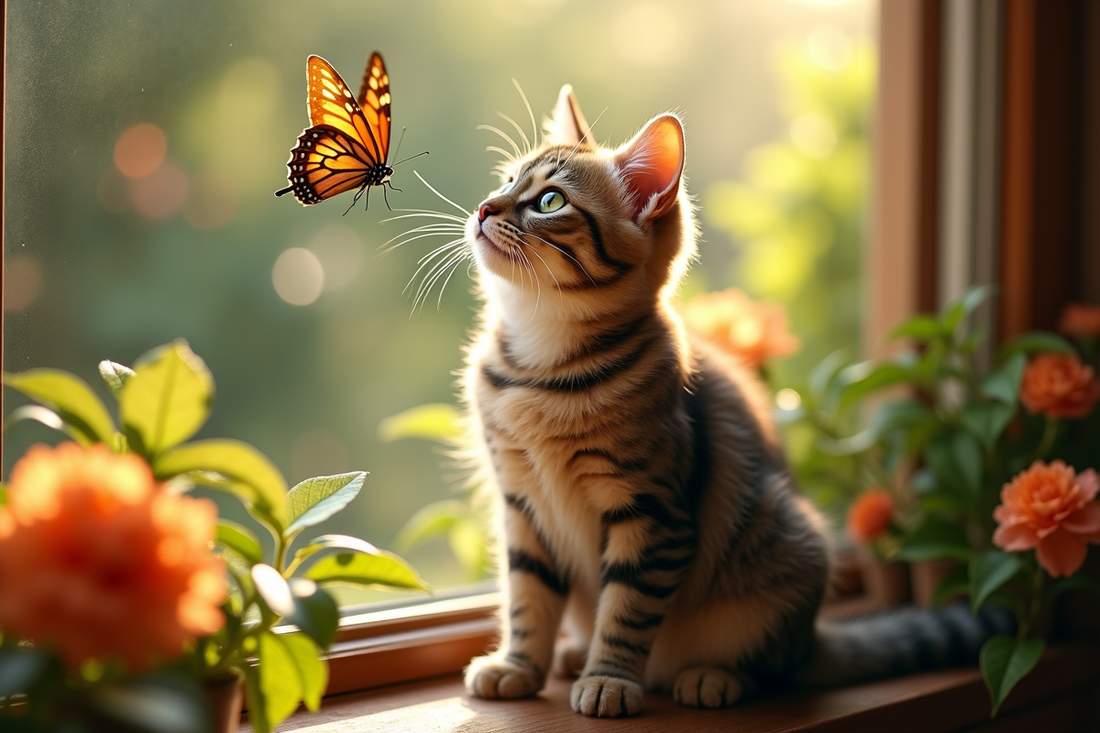Understanding why your cat loves to bite and scratch can be a perplexing challenge for many cat owners. This comprehensive guide offers expert insights into managing these behaviors effectively, drawing from personal experience and a deep understanding of feline behavior.
Key Takeaways
- Understanding the reasons behind biting and scratching is crucial for effective management.
- Recognize the difference between playful and aggressive behaviors.
- Identify triggers and use positive reinforcement to modify behavior.
- Provide enrichment and structured play to satisfy natural instincts.
- Seek professional guidance when necessary to address underlying issues.
Why Cats Bite and Scratch: A Complex Behavior
For many cat owners, biting and scratching can be both perplexing and challenging. These behaviors are not just random acts of aggression but are deeply rooted in a cat's natural instincts and communication methods. Understanding these behaviors is the first step in managing them effectively.
This guide aims to provide a comprehensive understanding of why cats bite and scratch, offering expert-backed strategies to manage these behaviors. Drawing from personal experience and expertise in feline behavior, this guide will help you navigate the complexities of cat communication.
Decoding Cat Communication Through Biting and Scratching
Natural Behaviors and Their Meanings
Cats use biting and scratching as natural expressions of self-defense, play, and communication. These actions can be playful or aggressive, and understanding the difference is crucial for effective management. Playful biting and scratching are often gentle and accompanied by relaxed body language, while aggressive behaviors are more intense and may be accompanied by hissing or growling.
Uncovering the Reasons Behind Biting and Scratching
Several factors can lead to biting and scratching, including overstimulation, emotional triggers, territorial instincts, health concerns, and compulsive behaviors. Overstimulation from excessive petting or play can lead to biting, while fear, stress, and anxiety can trigger aggressive behaviors. Territorial instincts may also play a role, especially in multi-cat households. Health issues or discomfort can lead to compulsive scratching, and it's important to rule out any medical causes.
Recognizing Problematic Behavior
It's important to define when biting and scratching become problematic. These behaviors can lead to potential injuries for humans and stress-related issues for cats. Recognizing the signs of problematic behavior and addressing them early can prevent further issues.
Identifying and Addressing Triggers
Reading Cat Body Language
Understanding your cat's body language is key to identifying early warning signs of biting and scratching. Tail flicking, ears back, dilated pupils, and vocalizations can indicate discomfort or overstimulation. Recognizing these signs can help you intervene before the behavior escalates.
Tracking Behavior Patterns
Keeping a behavior diary can help you identify patterns and triggers for biting and scratching. Documenting incidents can provide valuable insights into your cat's behavior and inform behavior modification strategies.
Strategies to Manage and Mitigate Biting and Scratching
Enriching the Environment and Play
Providing appropriate outlets for natural behaviors can help manage biting and scratching. Toys that mimic hunting instincts and structured play sessions can reduce frustration and provide mental stimulation. For more ideas on keeping your cat engaged, check out our article on keeping your cat mentally stimulated.
Establishing Boundaries and Respect
Understanding and respecting your cat's boundaries during interactions is crucial for preventing biting and scratching. Educating children and guests on mindful approaches to cats can also help reduce incidents.
Positive Reinforcement Techniques
Encouraging gentle interactions through rewards can help modify biting and scratching behavior. Redirecting behavior using toys can also be effective in diverting attention away from biting and scratching.
Alternatives to Punishment
Punishment can exacerbate fear and aggression, so it's important to use effective alternatives for correcting behavior. Strategies such as redirecting attention and providing positive reinforcement can be more effective in managing biting and scratching.
Managing Overstimulation and Providing Alternatives
Techniques for managing overstimulation include reducing sensory overload and providing appropriate outlets for scratching. Scratching posts placed strategically around the home can help satisfy your cat's natural instincts. For more tips on reducing anxiety and stress, read our article on reducing anxiety and stress with pets.
Professional Guidance and Medical Checks
If biting and scratching persist, it may be necessary to seek professional guidance. A veterinary consultation can help identify any medical causes for behavior, and behavioral advice can provide additional strategies for managing biting and scratching.
Addressing Specific Aggression Scenarios
Fear and Redirected Aggression
Calming techniques can help reassure and calm fearful cats, reducing the likelihood of biting and scratching. Recognizing and managing redirected aggression is also important for preventing incidents.
Territorial and Play Aggression
Managing multi-cat dynamics can help reduce territorial conflicts and prevent biting and scratching. Teaching appropriate play behaviors with interactive toys can also help manage play aggression. For more fun interactive games to play with your cat, check out our article on interactive games for cats.
Caring for Injuries from Bites and Scratches
Immediate care for cat-inflicted injuries is important to prevent infections. First aid essentials include cleaning the wound and applying antiseptic. If the injury is severe, seek professional medical attention to prevent complications.
Patience and Consistency in Behavior Management
Managing biting and scratching requires patience and consistency. By understanding the reasons behind these behaviors and implementing effective strategies, you can create a harmonious environment for both you and your cat. Engage with the community by sharing your experiences and seeking support in the comments.

